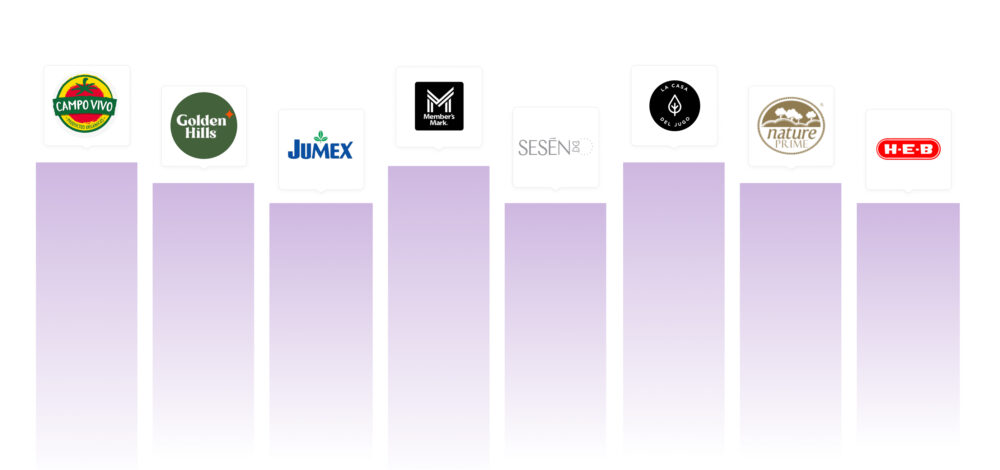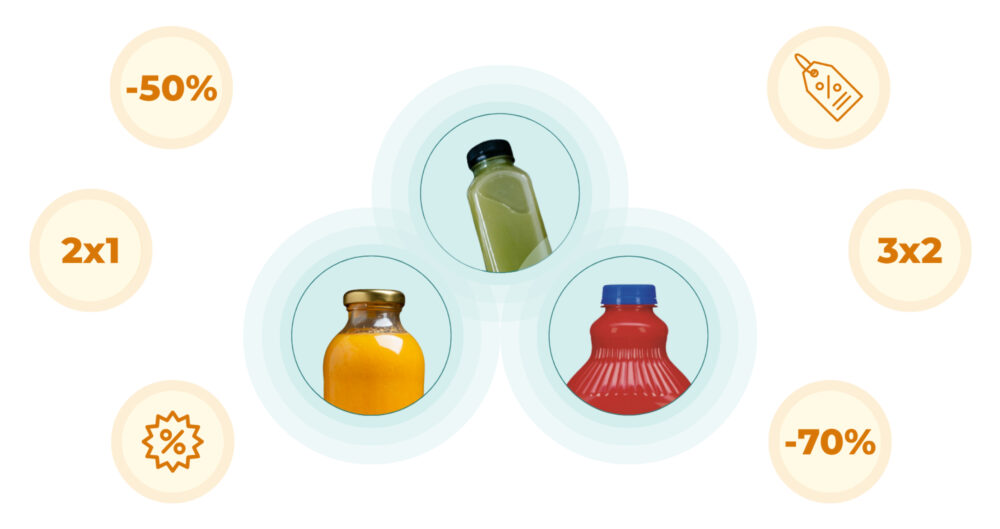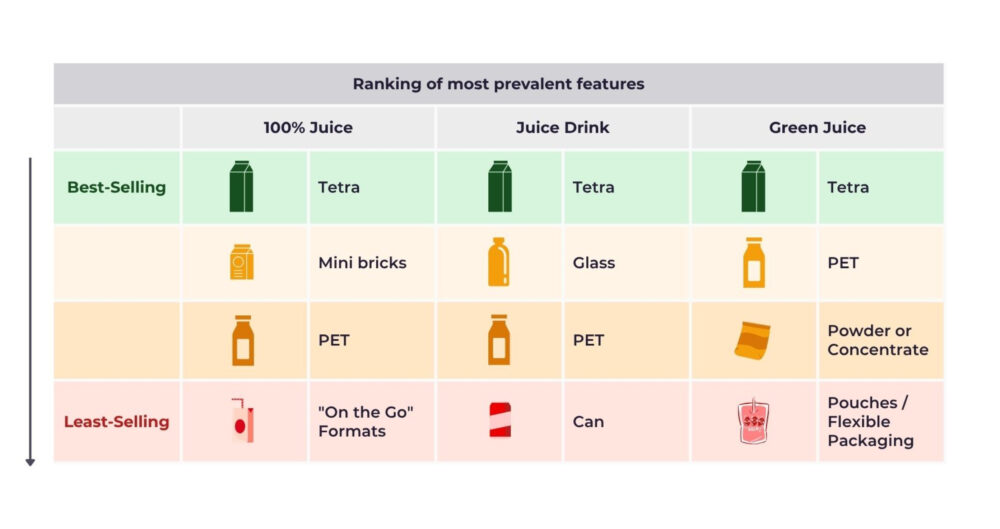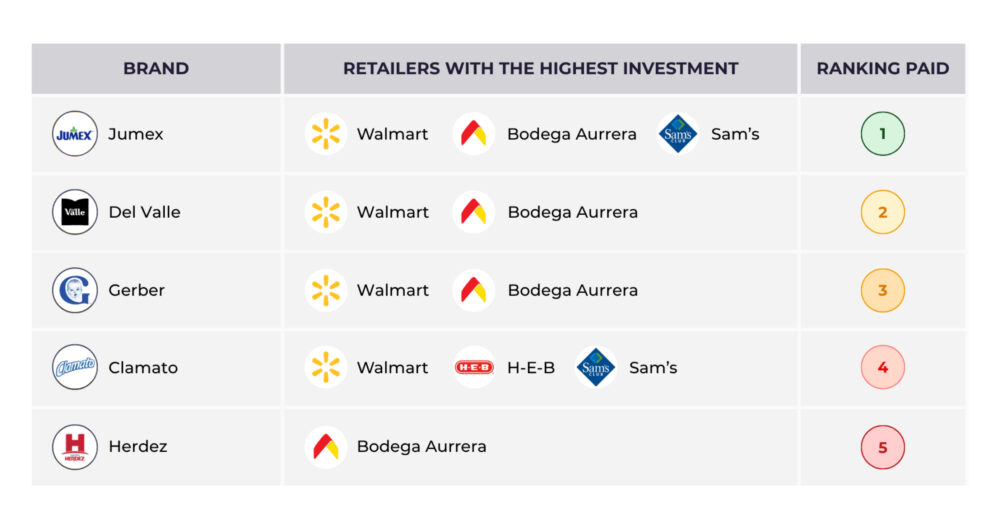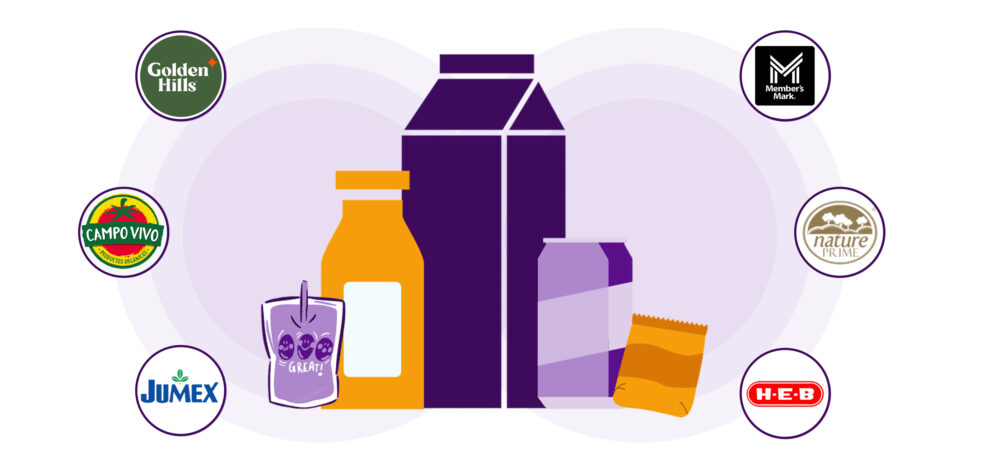Promotions, Formats and Retail Media: Key Factors in the Mexican Juice Market for 2025
Juice continues to be a staple on the Mexican table: it accompanies breakfasts, snacks and ‘on-the-go’ moments. Demand is concentrated in three main product families that share the same aisle: 100% juice (made from fruit), juice drinks (with a lower fruit concentration) and functional options like green juice.
After several years of inflationary pressure, shoppers are comparing more, valuing the price per litre and reacting to clear signs of savings. At the same time, there is growing interest in lower-sugar alternatives, practical packaging for home use and formats that make portion control easier.
Against this backdrop, three levers are defining the competition on physical and digital shelves: promotional activity, the choice of formats and investment in Retail Media. Based on our recent report on the Mexican juice market, we are focusing on these three levers to understand what works, where and why.
The Promotional Landscape: Restrained Strategies with Selective Impact
Promotional presence
Promotional mechanics in the Mexican juice market reveal a scenario where moderation prevails over commercial aggressiveness. With just 13.6% of SKUs on promotion during the period analysed, the industry is demonstrating a cautious approach to discounts.
The 100% Juice category leads promotional activity with 21.9% of products on offer, followed by Juice Drinks with 18%. In contrast, Green Juice maintains a virtually unchangeable position with only 0.9% promotional penetration. This reinforces its positioning as a premium category where the price reflects the perceived value.
The takeaway is straightforward: where competition for volume is most intense—100% juice—offers are used more frequently. At the other end of the spectrum, green juices support the purchasing decision based on attributes (perceived benefits, formulations, consumption occasions) rather than on discounts.
Promotional mechanics
The way products are promoted also varies by category. In 100% juice, the ‘2-for-X’ mechanic dominates, accounting for 44.12% of recorded activations. Direct discounts represent 26.47% and ‘small quantity’ promotions 17.65%, while combos and ‘mix and match’ offers make up the rest with a marginal presence.
In juice drinks, the order is reversed: direct discounts lead with 32.14%, followed closely by ‘small quantity’ (28.57%) and ‘2-for-X’ (28.57%) offers. In green juice, the pattern is even clearer: direct discounts lead with 35.90% and ‘small quantity’ promotions account for 33.33%; ‘2-for-X’ offers drop to 23.08%.
The operational conclusion is simple: the category responds best to concise messages that are immediately noticeable on the receipt. When the objective is to move volume in family-sized formats (1 litre), the ‘2-for-X’ offer works well. When the value lies in proposing specific benefits or encouraging trial, direct discounts and limited quantity promotions are more effective.
Differences by retail chain
The differences between retail chains confirm that it is not a level playing field. H‑E‑B records the deepest discounts, with price drops reaching up to 36.44% in the cases analysed. Chedraui follows with an observed maximum of 27.80% and Soriana with 23.39%. Bodega Aurrera and Walmart operate in more moderate ranges (20.69% and 16.15%, respectively), consistent with everyday competitive pricing strategies and tactically selected peaks. La Comer is the retailer with the most restrained approach (7.05%).
This complex picture calls for planning by location and by chain: the same SKUs perform differently if the depth of discount, the campaign calendar and the in-store exposure are not adjusted to the context.
Format Analysis: Tetra Pak Dominates and Defines Value Perception
Packaging and size dictate choice. In 100% juice, the format with the greatest presence is the 960 ml Tetra Pak, followed by the 475 ml Tetra Pak; the 200 ml and 125 ml mini-cartons maintain their place for children’s occasions and school lunchboxes.
In juice drinks, the 1-litre Tetra Pak is the anchor format, with PET or glass bottles between 500 ml and 1 litre as a secondary alternative; among the smaller sizes, the 125–330 ml Tetra Pak appears with limited exposure.
In green juice, the 960 ml Tetra Pak leads again, and less traditional variants are emerging: powdered concentrates in 300–500 g formats and frozen options for smoothies (600 g–1 kg), designed for consumers looking to personalise their drinks or who prioritise freshness.
This pattern favours brands that build their portfolio around the one-litre format. The 960 ml–1 L size strikes a balance between price per litre, convenience at home and the ease of creating simple promotional mechanics. Half-litre and individual formats serve tactical functions: immediate consumption, portion control and entry-level pricing. Cans and pouches or flexible packaging continue to have low traction in the traditional juice aisle, which suggests being selective with their distribution and reserving them for channels or occasions where they offer a real advantage.
When the promotional strategy is based on formats, coordination makes the difference
In 100% juice and juice drinks, the 1-litre format is a natural candidate for ‘2-for-X’ or ‘small quantity’ promotions because the saving is easily understood and the impact on volume is significant. For individual formats, a direct discount with a rounded final price is usually clearer for the shopper and better protects the margin. In green juices, the objective is to lower the barrier to entry: a controlled discount on the 960 ml Tetra Pak or a trial price for concentrates and frozen products, accompanied by messaging about servings per pack, can accelerate adoption.
It also helps to manage the breadth of the portfolio in each store. Too many SKUs in slow-moving sizes dilute visibility and make execution more expensive. The report underlines that management by SKU, retailer and city is a key control point: optimising the mix at each point of sale increases the effectiveness of promotions and of any media investment within the retail environment.
Retail Media: Defending Generic Terms and Focusing on Key Retailers
Investment in Retail Media accompanies and amplifies pricing and format decisions. When analysing the word “juice” on the main retailer websites, the investment ranking places Jumex first, followed by Del Valle, Gerber, Clamato and Herdez. These players prioritise high-reach environments: Walmart and Bodega Aurrera account for a large part of the budget for Jumex, Del Valle and Gerber, with additional spend in Sam’s Club for family-sized formats. Clamato diversifies into H‑E‑B and Soriana as well as Walmart, and Herdez stands out for its focus on Bodega Aurrera.
The logic is clear: defending generic terms captures shoppers who enter the category without a specific brand in mind, avoids ceding share to competitors and protects the space from own-brand labels. Coordinating paid visibility with price activations improves demand capture. When a ‘2-for-X’ offer is active on 1-litre formats, for example, sponsored positions in search and in the category listings increase the incremental reach of the message and reduce the effective cost per click. It is also advisable to adjust bids by location according to available stock and the promotional aggressiveness of each chain. An investment model that ignores stockouts or limited inventory wastes traffic and damages the shopping experience.
Keywords can also map to usage occasions. Terms like “1 litre juice”, “juice for kids”, “green juice” or “no added sugar” connect the format and value proposition with search intent. When building campaigns, it is useful to think in three layers of visibility: search defence (generic and brand terms), presence on the virtual category shelf—especially for anchor formats—and display ads during promotional weeks to capture additional traffic.
Operational Keys by Category: From Plan to Shelf
The data reveals a market that is becoming more sophisticated, where traditional volume-driven strategies coexist with more refined approaches to value creation.
For 100% juice, the basic plan is built around the 960 ml Tetra Pak. The most effective combination is everyday competitive pricing with well-scheduled ‘2-for-X’ windows, supported by Retail Media on generic terms. Mini-cartons, grouped in multipacks, can be supported by ‘small quantity’ promotions to facilitate top-up purchases and keep the brand present in the lunchbox.
For juice drinks, the 1-litre format is the decisive price point for in-home consumption. A moderate direct discount, alternated with weeks of high exposure on the retailer’s e-commerce category page, helps to drive trial without damaging the margin. Individual bottles work as an extension for on-the-go occasions, especially when the flavour and variety messaging is well-executed.
For green juice, the priority is to accelerate adoption and repeat purchases. A clear direct discount on the 960 ml Tetra Pak, supported by ‘small quantity’ promotions during high-traffic periods, reduces friction. For concentrate and frozen variants, it is advisable to highlight the yield per portion and functional benefits, relying on specific keywords rather than generic terms where competition is intense.
Conclusion: Coordinating Three Levers to Gain Market Share Profitably
In short, the juice market in Mexico is defined by well-coordinated tactical decisions. Promotions carry weight, although their scope is limited: only 13.6% of SKUs are on offer, with more activity in 100% juice and less in green juice. The 1-litre Tetra Pak acts as an anchor due to its value-per-litre proposition and its suitability for volume-driving mechanics. Investment in Retail Media ultimately sways the shopper’s choice when it defends generic searches and coincides with promotional windows at the highest-reach retailers.
The path to growth lies in coordinating price, packaging and visibility by chain and by location. Prioritising anchor formats, using simple mechanics and supporting them with in-retail media drives turnover and market share without damaging margins. With a disciplined test-and-learn approach, brands can scale what works and quickly correct course. The sector is moving towards data-driven decisions, more personalised offers and building perceived value, which favours those who develop omnichannel capabilities and a nuanced understanding of the digital consumer.

